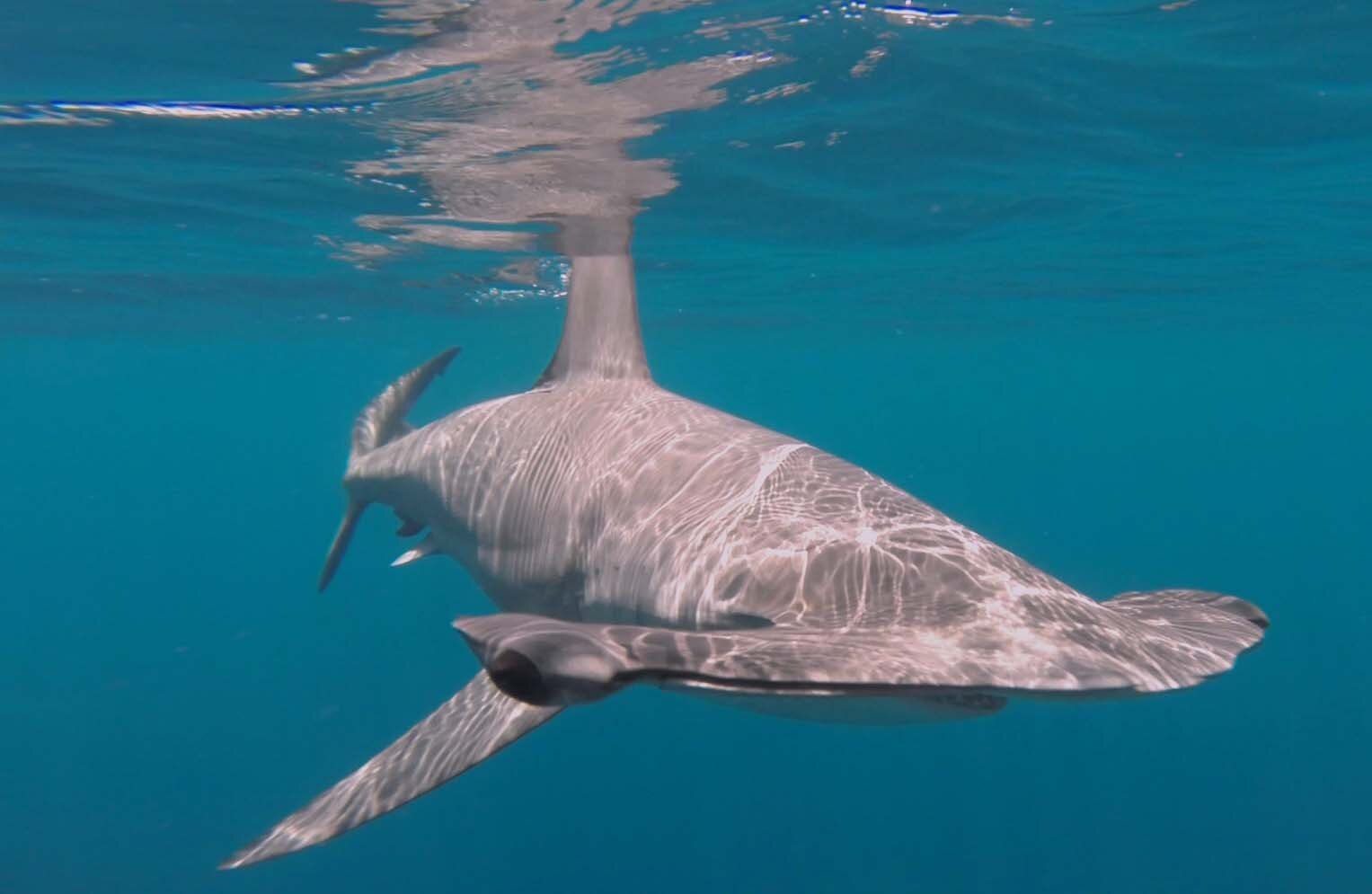Smooth hammerhead sharks
Smooth hammerhead sharks (Sphyrna zygaena) observed off the Portuguese southern coast
Ana Couto, Nuno Queiroz, James T. Ketchum, Eduardo Sampaio, Miguel Furtado, André A. Cid, Joana Castro, Rui Rosa
Environmental Biology of Fishes, 101, 1261-1268(2018)
DOI: https://doi.org/10.1007/s10641-018-0773-8
Abstract
Despite its worldwide distribution and vulnerable status, knowledge on the biology and ecology of the smooth hammerhead Sphyrna zygaena in the temperate NE Atlantic is very scarce. Here, we reveal intra-annual fluctuations in S. zygaena abundance in the Portuguese southwestern coast, using sightings data collected on board whale watching boats over five years (2010–14; excluding winter months). Moreover, we investigated how shark abundance is related to local environmental conditions. We describe the first smooth hammerhead “hotspot” in the NE Atlantic, and we show a recurrent pattern of occurrence during the warmer summer and autumn months (from July to October) near Sagres and Martinhal Bay and islands. Intra-annual variations in abundance were significantly associated with sea surface temperature and negatively related with upwelling index and chlorophyll a, suggesting horizontal movements linked to the seasonal changes. Hence, hammerheads moved inshore during the warmer periods (with low primary productivity), due to either direct influence of temperature in their movements or indirect influence in prey distribution. This hammerhead “hotspot” may constitute a nursery ground for S. zygaena, nevertheless, our data does not allow us to prove or refute such claim. Future telemetry-based studies should be conducted to fully understand hammerhead movements and habitat preferences, and to evaluate this “hotspot” as a critical habitat for this predator.
Keywords: Sea surface temperature, Nursery ground, Horizontal movements, Seasonality

